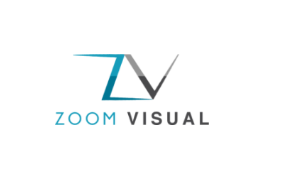In the realm of modern technology, LED walls stand out as a vivid testament to the wonders of visual display. These remarkable structures, composed of thousands of tiny light-emitting diodes (LEDs), have revolutionized the way we perceive and interact with large-scale imagery. From dazzling advertisements in bustling city centers to immersive displays in concert arenas and sports stadiums, LED walls have become ubiquitous in our visual landscape, captivating audiences and conveying messages with unparalleled clarity and brilliance.
At the heart of every LED wall is the LED itself, a semiconductor device that emits light when an electric current passes through it. LEDs are renowned for their energy efficiency, durability, and vibrant colors, making them ideal for use in large-scale displays. By arranging thousands of LEDs in a grid-like pattern, manufacturers can create a seamless display surface capable of producing stunning visual effects and high-resolution imagery.
One of the key advantages of LED walls is their flexibility and scalability. Unlike traditional display technologies such as LCD or plasma screens, which are limited in size and shape, LED walls can be custom-built to fit almost any space. This versatility has led to their widespread adoption in a variety of settings, from outdoor billboards to indoor video walls. LED walls can be curved, stacked, or arranged in unique configurations, allowing designers to create immersive and engaging visual experiences that captivate and inspire.
In addition to their flexibility, LED walls offer unparalleled brightness and clarity. Thanks to their high brightness levels and contrast ratios, LED walls can deliver vibrant colors and sharp imagery even in the brightest of environments. This makes them ideal for outdoor advertising, where visibility is crucial, as well as indoor applications where clarity and detail are paramount.
Another key advantage of LED walls is their durability and longevity. Unlike traditional display technologies that can degrade over time, LED walls are built to last, with many manufacturers offering warranties of up to 100,000 hours of use. This longevity, combined with their energy efficiency, makes LED walls a cost-effective choice for large-scale visual displays.
The applications of LED walls are as diverse as they are impressive. In the world of advertising, LED walls have become a dominant force, with brands using them to create eye-catching and memorable campaigns. From Times Square in New York City to the streets of Tokyo, LED billboards have become iconic landmarks, captivating audiences and showcasing the latest products and services in stunning detail.
In the realm of entertainment, LED walls have transformed the way we experience live events. Concerts, festivals, and sporting events now feature immersive LED displays that transport audiences to new worlds and enhance the overall atmosphere of the event. LED walls can be used to create dynamic backdrops, interactive displays, and even three-dimensional effects that blur the line between reality and imagination.
In the world of art and design, LED walls have opened up new possibilities for creative expression. Artists and designers are using LED walls to create dynamic installations that engage and inspire audiences. From interactive light sculptures to immersive multimedia experiences, LED walls are pushing the boundaries of what is possible in the world of visual art.
As LED technology continues to evolve, the future of LED walls looks brighter than ever. Advances in LED manufacturing are leading to thinner, lighter, and more energy-efficient displays, opening up new possibilities for their use in a variety of settings. From flexible LED panels that can be bent and shaped to fit curved surfaces to transparent LED screens that can be integrated into architectural designs, the possibilities for LED walls are truly limitless.
In conclusion, LED walls have revolutionized the world of visual display, offering unparalleled brightness, clarity, and flexibility. From advertising and entertainment to art and design, LED walls have become a ubiquitous and indispensable part of our visual landscape. As technology continues to evolve, the future of LED walls looks brighter than ever, promising even more stunning and immersive visual experiences for audiences around the world.





Comments